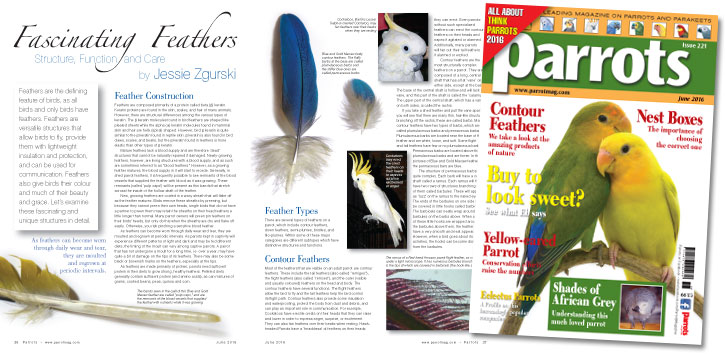
by Jessie Zgurski
Feathers are composed primarily of a protein called beta (β) keratin. Keratin proteins are found in the skin, scales, and hair of many animals. However, there are structural differences among the various types of keratin. The β keratin molecules found in bird feathers are shaped like pleated sheets while the alpha (α) keratin molecules found in mammal skin and hair are helix (spiral) shaped. However, bird β keratin is quite similar to the β keratin found in reptile skin. β keratin is also found in bird claws, scales, and beaks, but the β keratin found in feathers is more elastic than other types of β keratin.
Mature feathers lack a blood supply and are therefore ‘dead’ structures that cannot be naturally repaired if damaged. Newly-growing feathers, however, are living structures with a blood supply, and as such are sometimes referred to as “blood feathers.” However, as a growing feather matures, the blood supply in it will start to recede. Generally, in shed parrot feathers, it is frequently possible to see remnants of the blood vessels that supplied the feather with blood as it was growing. These remnants (called ‘pulp caps’) will be present as thin bands that stretch across the inside of the hollow shaft of the feather.
Buy Now!








Parrot Chat
Buyers Guides
Breeding articles